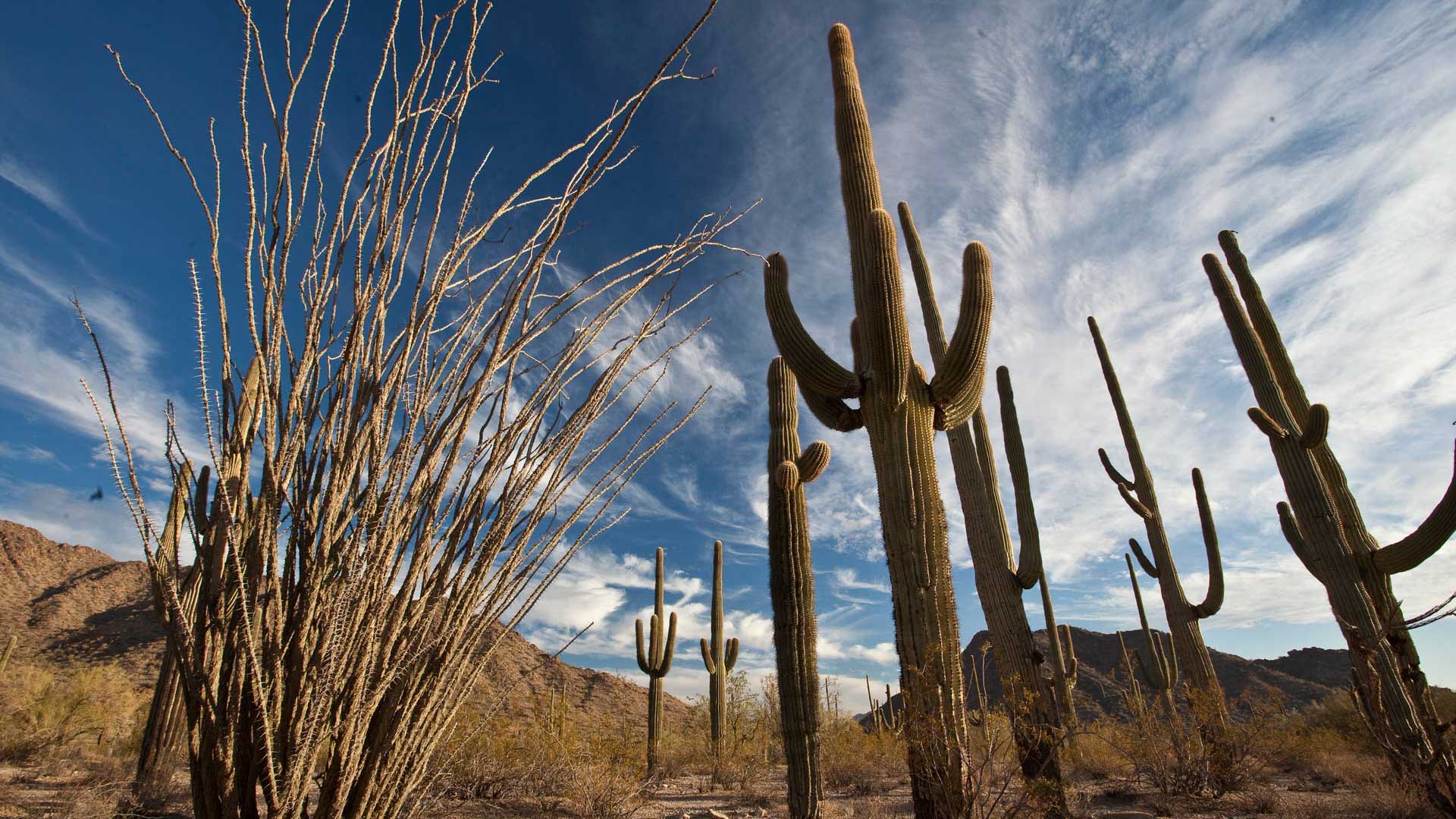 Sonoran Desert National Monument.
Sonoran Desert National Monument.
Last March, the Department of Interior (DOI) proposed a change in guidelines to improve how the Bureau of Land Management (BLM) oversees public lands, waters, and wildlife.
Under the revised Public Lands Rule, multiple BLM programs would apply land-health standards and clarify that conservation is a use under the Federal Land Policy and Management Act of 1976.
The federal agency oversees over 10% of land across the nation and about 30% of its mineral resources.
According to the 1976 Federal Land Policy and Management Act (FLPMA), the BLM is tasked with managing land for “multiple uses and sustained yield.”
This means that BLM’s management of public lands is dependent on the health of the ecosystems and the lands’ ability to deliver associated services such as clean air, water, food and fiber, renewable energy, and wildlife habitat.
In essence, BLM has to multitask as it promotes multiple use on public lands, although multiple use does not imply use on every acre.
In addition to recreation, 90% of BLM lands are open to oil and gas leasing and the majority is open to hard rock mining. 60% of lands are also open to livestock development.
Current policy limits BLM due to authorized grazing.
The BLM emphasizes that ensuring resilient ecosystems has become increasingly important, especially as public lands have faced more negative impacts from climate change and authorized use.
Today, about 15% of public lands are permanently protected, according to the conservation group.
The new Public Lands Rule aims to place conservation at the center of the bureau’s land management practices.
Michael Carroll, BLM campaign director with the Wilderness Society, sees the proposed rule as a once-in-a-generation opportunity to balance the management practices of the nation’s largest land manager.
Carroll explained that when the agency was initially established, it was seen as the keeper of “leftover lands.”
“The administration and the Congress at the time set up the Park Service, set up the Forest Service, those got all of the attention…Our impression of them have changed drastically, but because of that history, commodification of those lands, focusing on development of those lands has always been the sort of bigger priority,” Carroll said.
The new rule aims to establish new tools and guidance to help the agency bring that management into balance and prompt local managers towards a more landscape approach to how they assess those lands.
A critical component of the proposal that Carroll identified, is the Area of Critical Environmental Concern designation.
“It’s the only designation that’s actually called out in the law that governs the agency and it’s really been highlighted over the years as one of the more marquee tools that they have to say, ‘Hey this area is so important for water resource protection or for species protection, or because it’s a great recreation area that we need to designate it’,” Carroll said.
This designation calls for special management in order to protect significant natural, cultural, and scenic resources, or life and safety from hazards.
Mike Quigley, Arizona director for the Wilderness Society emphasized the importance of addressing the shift in priorities since the agency’s inception, noting that riparian and watershed health are as much of a priority as recreational access.
“We’re seeing that connectivity and habitat for native species movement and survival is a priority, but the regulatory structures of the agencies have not kept up with those new priorities,” Quigley said.
Quigley agreed that the Public Lands Rule would give BLM a new focus to address the shift in priorities from when the agency was first created.
“It’ll give the Bureau of Land Management a chance to be one, more holistic in how they manage their estate and two, and this is a critical point, more responsive to the communities that surround the lands and also use the lands that they manage,” Quigley said.
In Arizona, 12.1 million acres of public land are managed and conserved by the bureau, and 17.5 million subsurface acres.
That's just under 17% of Arizona's nearly 72,953,600 square acres and the Wilderness Society claims that only 12% of that is protected for conservation.
According to BLM statistics, there are over 60,000 active mining claims throughout the state and 744 grazing permits or leases on 825 allotments.
There are also 39 utility-scale solar energy applications and two 500kV transmission lines in development on state land.
Quigley acknowledged that generating revenue may be a priority for some but pointed out, “If financial return on public lands is a priority for you, you should recognize that the outdoor recreation industry in Arizona is a $21 billion-a-year industry, and that industry is entirely dependent upon having natural spaces that Arizonans can go recreate and people are not going to recreate in the mining pit.”
Caroll added that the new rule would also offer support to at least two Arizona offices to push forward new resource management plans, or land management blueprints.
“Two large planning areas, both in Kingman and the Safford field offices of the Bureau of Land Management in Arizona that haven’t updated their plans in over 30 years,” Quigley said. “So the management of those areas is literally management from the 80s, trying to meet the challenges of a climate that has changed drastically, use patterns that have changed drastically, and they need new tools and they need new direction from the national BLM leadership."
Without the assurance that native ecosystems are healthy and functioning, BLM risks failing in its commitment to the stewardship of public lands.
BLM anticipates a decision to be announced in early April.

By submitting your comments, you hereby give AZPM the right to post your comments and potentially use them in any other form of media operated by this institution.